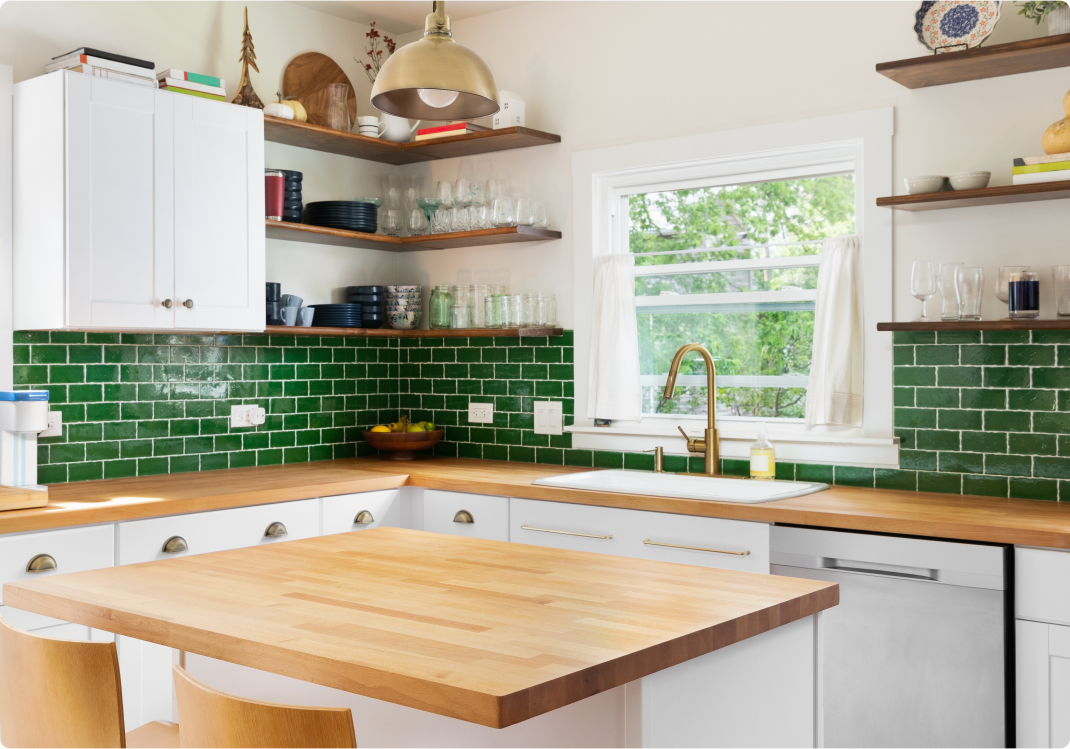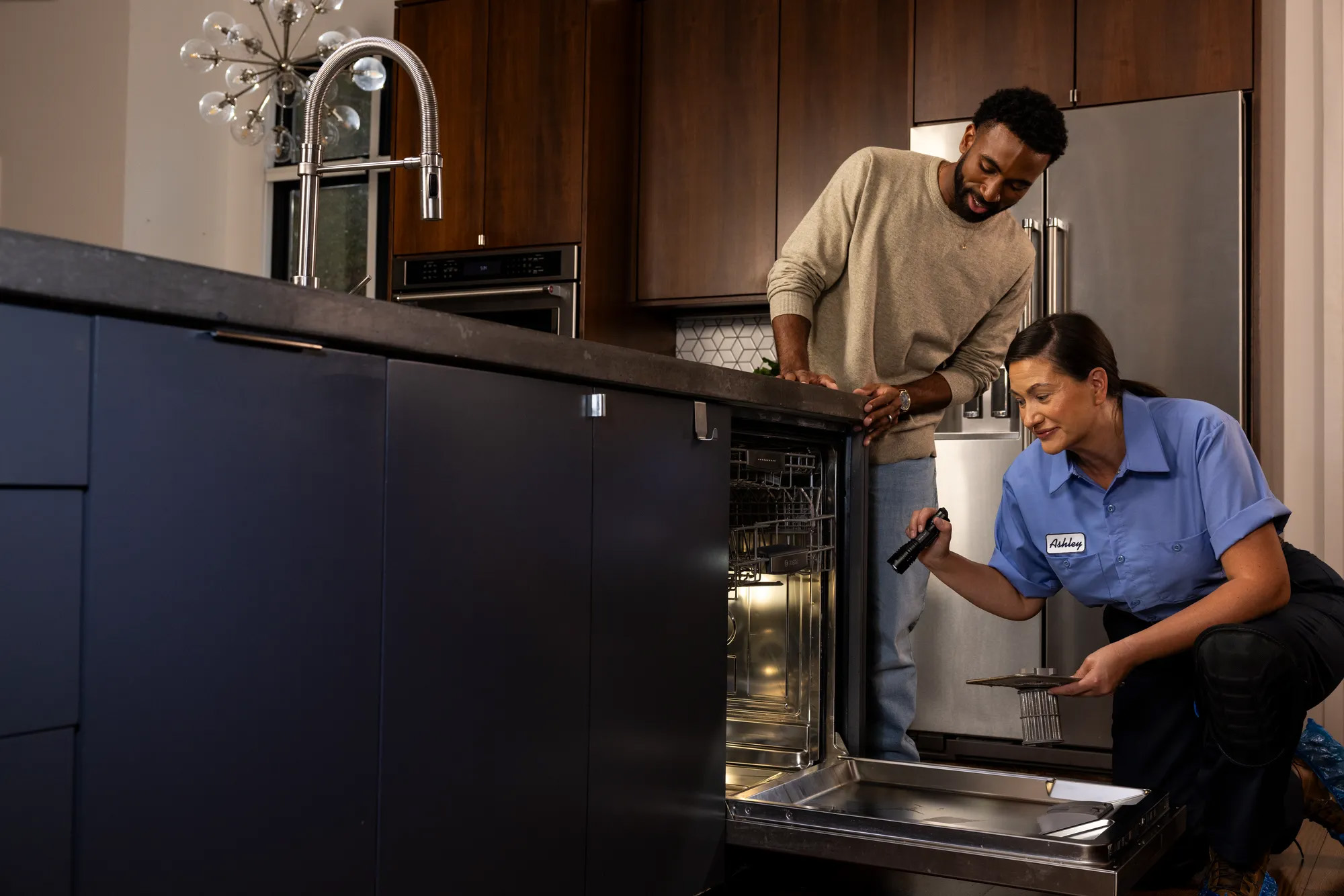How to Tile a Kitchen Backsplash in 9 Simple Steps

One of the best ways to brighten up your kitchen is by redoing the tile of your backsplash. We have the how-to steps to spruce up your kitchen’s backsplash, the right way.


One of the best ways to brighten up your kitchen is by redoing the tile of your backsplash. We have the how-to steps to spruce up your kitchen’s backsplash, the right way.
You’ve put a lot of effort into remodeling your kitchen. You’ve installed new appliances and modern cabinets; maybe you’ve put in a new butcher-block island or some new granite countertops. Of course, you’ve spruced up the walls with a fresh coat of paint. But there’s still something missing. At first, you can’t quite put your finger on it, but then you realize–the backsplash area still looks kind of dingy and drab, doesn’t it?
Never fear. Converting this boring wall space into an eye-catching work of art is easier than you think. So, where do you start when tiling a backsplash? Here’s how to get started quickly and easily:
Tools and Materials
New tiles
Tools to prep the area
Measuring tape
Tile adhesive
Trowel
Caulk
Wet saw
Grout
Sponge
Thinking about coverage?
Security for your home. Protection for your budget.
Step 6 — Install the Backsplash Tiles
Start setting the tile at the bottom of your center line. Leave just enough room for a bead of caulk. You’ll want to firmly press each tile onto the wall. Continue working your way outward in both directions.
Step 7 — Cut Tiles to Fit as Needed
You’ll need a wet saw to cut tiles so they fit around outlets, light switches, and in odd gaps. Luckily, you can rent a motorized wet saw from your local hardware store.
To use the saw, lay the tile on the sliding table and push it forward to make your initial cut. You’ll want to pull back and adjust your tile for the second cut. After your pieces are cut and applied, let your adhesive dry overnight.
Step 8 — Fill the Tile Joints With Grout
Once your tiles have had time to dry, mix a batch of unsanded tile grout, following the directions on the carton. Scoop a portion of the grout out of the bucket and smear it across the surface of the tile diagonally to the grout lines.
Step 9: Finish
After grouting, you are going to want to clean the surface with water and a soft sponge. Wipe across the grout line and be sure not to pull any grout from the joints. Give your grout 45 minutes to set, then you’re ready to apply caulk. Apply a thin bead of tub-and-tile caulk into the joint at the bottom of your backsplash, in corners and between the tile and any cabinets.
Ready for more DIY projects? We have plenty of ideas for sprucing up your kitchen. We can walk you through projects like deep cleaning your kitchen and unclogging that kitchen sink drain. That’s not all – you can be sure components of your appliances and systems are covered with a home warranty plan from American Home Shield®. We have plans for every budget, so call or go online today and find the one that’s right for you.
If you’re already an AHS member, we’re here for you when you need us. You can request service in MyAccount 24/7.
Our home warranty plans help keep your essential appliances up and running.

AHS assumes no responsibility, and specifically disclaims all liability, for your use of any and all information contained herein.
Have a plan for your home when things don't go according to plan
Shop Home WarrantiesStaging